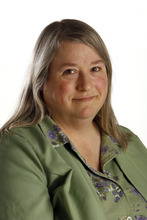This is an archived article that was published on sltrib.com in 2012, and information in the article may be outdated. It is provided only for personal research purposes and may not be reprinted.
If we lived in late 19th century Utah, this last week of May would find us wrapping up business in most of our social, religious and civic organizations. Not only would school be closing, but so too would be the regular meetings of most young men's clubs, women's sewing circles, dramatic societies, debating clubs, literary associations, and, if you were LDS, Relief Societies and Young Men's and Young Ladies' Mutual Improvement Associations.
There was too much work to do in the summer and fall for many people to engage in social organizations. Winter, with its long, dark evenings, was the season for that.
Organized in 1854 and disbanded in 1856, the Polysophical Society formed by the notable siblings Lorenzo and Eliza R. Snow may have been the first such Utah social club. Members gathered to give speeches, display musical talents and discuss current events. The Young Men's Literary Association featured poetry and literature recitations as well as debates, dancing and the collection of a library, from 1864 through at least 1867.
The women's Blue Tea Society formed in 1875 and the Ladies' Literary Club organized in 1877 were, like the Young Men's Literary Association, exclusively non-Mormon cultural societies. The LDS Young Ladies' Mutual Improvement Association dated to 1869, while the corresponding Young Men's association was organized in 1875.
Like so much else throughout Utah's history, each of these social groups served either the Mormon or the non-Mormon population, never both. The religious divide was as strong in music, poetry and finger sandwiches as it was in politics, business and education. One notable exception — there may have been others — was a society formed in Fillmore late in 1873. It defined itself as "An Association for Mutual Improvement in Elocution, Composition and Debate, and for enlarging our fund of general intelligence, in the pursuit of which objects we desire to exhibit a due consideration for the opinions and feelings of others."
Despite that term "Mutual Improvement," the Fillmore society — which quickly adopted the name "The Athenaeum" — was not an LDS-specific organization but a society open to everyone in Fillmore who would abide by its rules. Those rules included disapproval "of every act committed by any of its members with the intention to injure the feelings of any person," and a declaration that "its most earnest desire was promoting harmony & fraternal relations."
This was a serious rule: In 1876, two members were fined by the society for drunkenness, swearing and disturbing the assembly.
Young women were soon invited to join the Athenaeum, and both men and women delivered short papers at their weekly meetings. Other papers were "published" in a single-copy, handwritten "newspaper" that was read aloud to members. Members were assigned research questions — anything from the definition of a word to the beliefs of Mennonites to the biographies of American authors — and were called upon to recite their findings.
Debates played a prominent role. Some early debate topics included, "Has the world advanced in morality since the Augustan age of the Roman Empire?" and "Resolved, that the Statesman is more serviceable to the country than the Warrior." (Unfortunately, the Athenaeum minutes do not record the arguments made.) Members also staged dramatic presentations.
Perhaps the most important of the Athenaeum's activities was the development of a small lending library. That library became such a success that when O.H. Riggs, territorial superintendent of Common Schools, made a tour of inspection in 1875, he noted: "We visited the Fillmore Athenaeum Library and found most of the books were taken out to be read by the enterprising young ladies and gentlemen who are interested in storing their minds with useful knowledge."
By 1877, the Athenaeum was dissolved and its library melted away through lack of leadership and resources. Its LDS members were absorbed by the Mutual Improvement Associations; its non-Mormon members were left without an organized social group.
While it lasted, though, the Athenaeum, without regard for party or creed, served as a rare 19th century model for community cooperation.
Ardis E. Parshall is a Utah historian who enjoys feedback from readers. She's at AEParshall@aol.com



